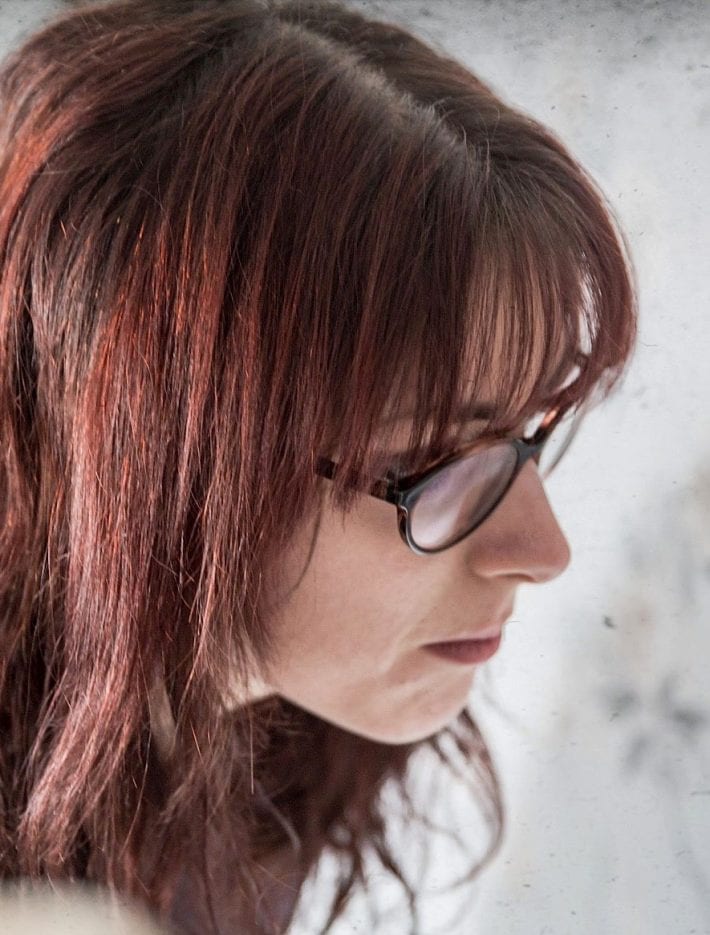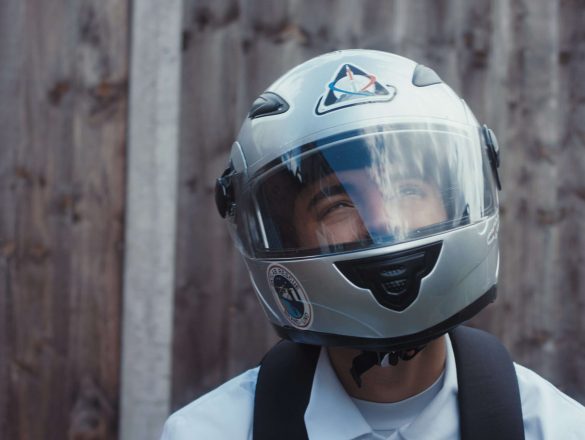it’s the little ‘every day’ tricks of the trade which really make a difference to the quality of your film
Sophie Black is founder of Triskelle Pictures an award-winning British film production house which specialises in visually distinct narrative films, music videos and art department services.
1. Set a colour palette (and make sure every member of the crew knows what it is)
This is the easiest way to create a complete, cinematic and polished look for your film, even with a limited budget. You don’t need to completely restrict yourself with a limited colour palette (unless you’re trying to recreate Zhang
Yimou’s Hero!), but the production designer should talk with a director during pre-production, and look at any of their inspiration imagery, to think of a colour scheme that best supports the themes, emotions, characters and overall ‘world’ of your film. Then, once this palette is set, it will give you a plan for any design items you buy – even ‘basic’ items like kitchen utensils. Just make sure every member of the crew is on the same page: for example, if your production designer has painted all the locations in a deep, autumnal colour scheme, but your costume designer has bought clothes in pale pastel shades, then everything could look disjointed, and not in a good way!
2. ‘White’ never means white when it comes to the screen!
When watching an independent film, the bright white wall of a rented accommodation is a clear indicator that the filmmaker has just shot the film ‘in their mate’s house’. Not only does it look a little low-quality, but it’s a nightmare for your camera team. Their lights will bounce off a white wall, taking away some of the control that they need. It’s even worse if they’re trying to light a glossy white cupboard door! So, if you want to make a room look white on camera, always try and paint the walls a matte off-white colour if you can, or even a very subtle cream; it will make the room look much less sharp, whilst appearing much more cinematic, and it will make everything much more manageable for your team.
The same goes for white fabrics. If you want white bed sheets, for example, then a simple, cheap and effective method is to dip the fabric in a bucket (or a sink!) of tea. You leave it submerged for a minute or two if you just want to mute the brightness of the white or leave it in for longer if you want the fabric to look aged, faded or dirty. The same goes for costume design, in the event that your art department has to cover both areas (as they sometimes do on lower budget productions).
3. Be aware of glass: avoid it or use it to your advantage.
We’ve all seen it in bloopers: a scene is just getting really intense, and then you spot a crew member casually reflected in a mirror or a window. It ruins the moment, and a production designer should help you minimise this risk as much as possible. Having less glass on set will also help your lighting team, too. If windows and mirrors can’t be removed, then find ways to dirty or scuff them up (if the location will allow) to minimise the reflections. For framed photographs, see if the glass can be removed completely; when the picture is in the background of a shot, your audience will never realise the glass isn’t there!
However, the art department should always chat with their director and DOP before removing any glass – and check the storyboard and shot list as much as possible. It could be that a mirror on a wall plays a key part in one of the intended shots, like a shocking character reveal in a horror film.
4. Understand which camera you’re using – and know your lenses too.
Just because you work in the art department, doesn’t mean you shouldn’t have a good working knowledge of different camera equipment. Most important of all is an issue called moire, in which a wibbly line effect appears on camera, caused by certain patterns and shapes. When it appears, it not only distracts your audience, but it can make a production look amateurish.
A general rule is to avoid checks and thin stripes, but it completely varies depending on the camera and their sensors. For example, moire can appear on lower-end DSLR cameras through something as simple as the stripy vent at the top of a radiator, and it looks even more obvious when the camera is moving. Higher-end cameras can cope with more complicated patterns, such as tweed, but then moire is caused when the camera picks up finer details you haven’t noticed before: I once saw moire caused on a Black Magic camera by an actor’s ribbed vest!
If a production designer is worried about a moire-risk item, particularly if they don’t have experience with the particular camera the production is using, then they should talk to their crew and see if they can bring the item in for a camera test. The time spent doing this will be completely worth it if it avoids delays or even ruined footage during the shoot.
Although the camera’s sensor is the most important element here, the production designer should always ask questions about lenses before placing
items on set. For example, in a shot where a person is sat in-between two plants, those plants may look like they’re no-where near the actor on certain wider lenses (causing unattractive ‘dead space’), or the plants may look like they’re coming out of the actor’s head on a longer lens! If in doubt, a production designer must always feel confident enough to check the monitor, and then move items accordingly – and the rest of the crew must enable them to do this. Where possible, a separate monitor on set for the art department can really help them to do this job to the best of their ability.
5. Make sure you have the rights to all artwork and imagery
You wouldn’t release a film if it had a famous song in it, or a clip from someone else’s movie, without having the rights first. The same goes for any paintings or photographs used on your set. We all know to not put famous artworks in our films – but if you feature even a simple photograph of a person in a frame, without getting permission, they that person won’t be happy when they see the final film! Equally, an artist may catch your film at a festival, see their artwork on the wall, and file a complaint against your production company. Nobody wants that to happen, and it’s easy to avoid.
For photographs of people, treat the subjects as you would any other actor. If you can, then stage fake family photos with people you know, and get written permission to use their images in the film. Although the producer will be in charge of getting the release forms signed, your art department crew can still help you with this process; they could even help you with staging and suggest
outfits for the subjects to wear in the photographs, to help these images tie in with the design choices of the rest of the film.
If you need artwork, posters or other large-scale photographs on your set wall, then this is something a production designer can safely source for you. Some production designers may be able to create this imagery themselves, but if the time scale is too tight, or if their workload is stretched too thin, then the best thing to do is reach out to artists on social media (or even local musicians, if you want band artwork) and see if they would like their work featured in the film. That way, you’ll definitely have the rights to all images featured in the film, and you’re helping to promote other creatives at the same time; that’s a win-win situation all round!
Your art department, as with every member of your crew, are specialist problem-solvers; the above tips are just a small sample of what they can bring to your production, and even though these techniques seem simple, they really will help you to create a polished-looking film which is safe to release. Your production will be the best it will be – and what’s more, with your art department looking after these issues, you know it’s in safe hands, and that’s one less item on the list for your director to worry about!



